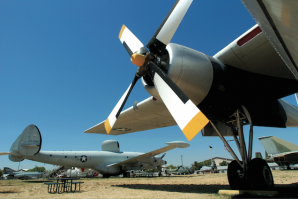The air cargo industry has long been a valuable component in the Capitol Region’s economy. But in spite of some rosy growth projections, air freight traffic in the region has been in a steady decline for more than a decade with no sure signs it will return to its former prominence.
California Department of Transportation statistics show air cargo built steadily in California throughout the 1990s, peaking in 2000 at 4.5 million metric tons. Economist Jock O’Connell, a principal consultant of the Clark Street Group, says that surge sparked a belief that the state’s leading air cargo facilities in Southern California and the Bay Area would be overloaded, positioning Mather (MHR) and Sacramento International (SMF) to relieve some of the burden.
But that never happened. The bursting of the technology bubble, security hassles after 9/11 and lingering effects of the recession have deeply affected air cargo. So has competition outside and within the industry. Shippers are bypassing California more often, opting for hubs in Anchorage, Ala., Memphis, Tenn., or Louisville, Ky. Ground shipping, meanwhile, has become vastly more efficient, making it a viable alternative to air transport.
These and other changes have combined to drive down air cargo volumes statewide. O’Connell notes that in 2000 San Francisco International handled almost 700,000 metric tons of cargo; in 2011 it handled only 421,000 tons. Similar drops have been seen at virtually every other major air cargo facility in Southern California. Mather has taken a significant hit, dropping from 167,000 metric tons of cargo in 2000 to 72,000 metric tons in 2008 and to just more than 45,000 in 2011.
With such an extended decline, O’Connell questions why officials continue to be bullish on Mather’s future.
“To some extent, the notion persists at Mather and at airports up and down the interior of California that they will get this overflow from SFO and LAX. But this onslaught of air cargo that was supposed to overwhelm those airports has never materialized,” he says.
He points to reports such as a January 2011 economic study commissioned by the Sacramento County Airport System that predicts Mather will grow by up to 1.5 percent annually through 2030. But with UPS currently the only carrier there, and with the other big player in the game, FedEx, seemingly disinclined to relocate from SMF, he doesn’t see how that will happen. That, he says, leaves Mather dependent on revenues generated by SMF to subsidize its operations.
Sacramento Metro Chamber President Roger Niello, a former Sacramento County supervisor, says there has been talk for years about moving Mather’s air cargo operations to SMF, but the county has always preferred to keep them separate.
Glen Rickelton, airport manager for the Sacramento County Airport System, dismisses the possibility of moving all air cargo traffic to SMF, saying it would require more than $100 million in infrastructure changes at that facility. He also notes the county’s longstanding desire to attract another carrier to Mather, though he says that likely is “far into the future.”
Rickelton acknowledges that Mather — and Executive Airport and Franklin Field, the remaining members of the county airport system — depend on revenues generated by SMF, but he also insists that projected growth figures for the facility are realistic and that they take into account the extended decline in air cargo traffic statewide. He says the county’s master plan does not depend on Mather’s air cargo volume but is rather set up to take advantage of other aviation opportunities that may arise in an improved economy. Even so, he says, nobody is ready to pack it in on air cargo.
“There is always going to be time-sensitive goods, like medicines, that need to be shipped by air,” he says. “Air cargo is not going to be the cornerstone of our system, but it will always be important.”
Recommended For You

The Little Airport That Could
SMF navigates a nose dive
In September 2008, when Lehman Brothers collapsed and the municipal bond market froze, Sacramento International Airport had just begun constructing the biggest capital improvement project in the county’s history.

High Flyin’
How McClellan went from AFB to BP
In 1993 the federal Defense Base Closure and Realignment Commission added McClellan Air Force base to its list of potential closures, and the Capital Region drew in its collective breath.


